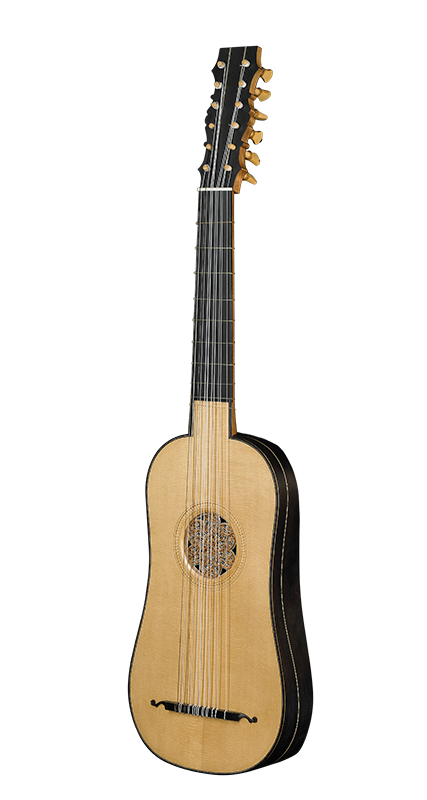
Separated from her neighbors by the formidable Pyrenees, and entirely or partially under Moorish rule for nearly eight hundred years, Spain has long been regarded as a land of romance and mystery. The guitar has been associated with Spain and considered the national instrument of that country since at least the sixteenth century. It is here where the four-course Renaissance guitar originated over four centuries ago, where a fifth course was added at the dawn of the Baroque, where the first elements of modern guitar construction appeared, and where the modern classical guitar was born.
In the middle of the eighteenth century, the five-course guitar was still the standard form of the instrument throughout Europe; it lingered even as the guitar of six single strings developed and grew in popularity. Spain, however, followed a different path. In the mid-eighteenth century, Francisco Sanguino of Sevilla began producing guitars with six double courses, thereby establishing a tradition that was to continue in Spain for some seventy years, long after the rest of Europe had fully embraced six individual strings. The reasons for Spanish lutherie to remain committed to six-course guitars are not entirely clear.
The turbulent reign of Charles IV (1788–1808) followed by the Peninsular War (1808–1814) may have hindered innovation and change. Perhaps we should also reckon with the constricting effects of guild organization. In 1833, the famed journalist Mesonero Romanos wrote: “Guitar making remained in a passive state due to the oppression of the Ordinances of the Guilds.” The guild system in Europe had a long history of strict regulation and apparently no more so than in Spain.
Click on any of the guitars below to view details about the instrument and its history,
including biographical and performance videos.
Click on any of the guitars below to view details about the instrument and its history, including biographical and performance videos.